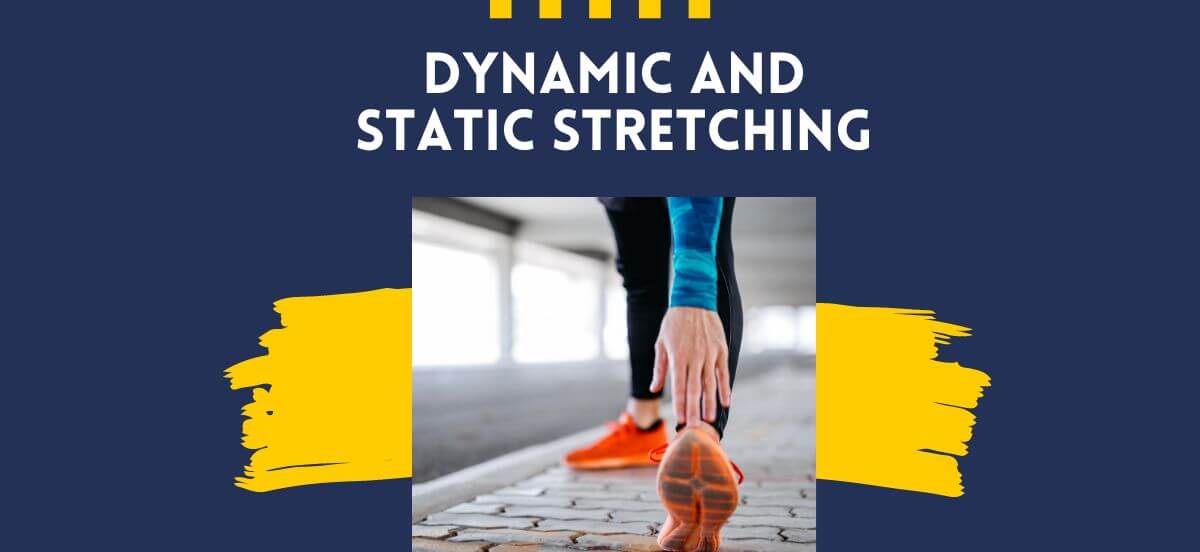
Exercise is an important part of life, but with exercise comes a lot of questions, such as how you should warm up before exercise and cool down after exercise. How should you prepare for exercise to prevent injury, and how should you help your body recover after exercise? Have you ever heard of the terms dynamic stretching and static stretching? Do you know the difference between dynamic and static stretching? When should you perform one over the other? If you don’t know the answers to these questions, keep reading for the answers.
There are many different ways to stretch, and there has been a lot of research done on the various types of stretching. First, we will cover how to stretch as a warm-up before exercise, which is termed dynamic stretching. Dynamic stretching involves moving the body’s joints through their active range of motion without bouncing or holding a stretch.¹
Dynamic stretching aims to move the joints through their available range of motion in a similar pattern to the exercise movements that the individual will be performing.² The goal of dynamic stretching is not to increase a joint’s range of motion or lengthen a muscle. Instead, the goal is to wake the body up and get it familiar with the available range of motion that it does have.
On the other hand, static stretching should be performed after the completion of a bout of exercise. Static stretching is a controlled, prolonged movement in which one or multiple joints are held at a person’s end range of motion.³ The muscle is held in a lengthened position for a prolonged period of time, and you will feel a stretching sensation in the muscle.²
Static stretching aims to increase joint range of motion and reduce muscle soreness after exercise.² Static stretching should be held for 15-60 seconds to induce a change in joint range of motion. Static stretching before exercise can actually impair your performance and increase your risk of injury due to acute changes in muscle length that change your proprioception, or body awareness.
Now that you know the difference between dynamic and static stretching, do you have a toolbox of stretches to perform before and after exercise? First, we will cover some general dynamic stretches to perform before exercise or activity to help you feel warmed up and ready to go. Be sure to start off slowly at a low intensity and ease your way into the movements. Perform each of the movements for 30-60 seconds, or until your body feels warmed up.
- Cat cow pose
- Standing spinal rotations
- Forward lunges
- Lateral lunges
- Backward lunges
- Arm circles
Now we will cover some general static stretches to perform after you exercise. Each stretch should be held for 15-60 seconds, and you should feel a stretch in the muscle, but no pain.
- Standing quad stretch
- Seated hamstring stretch
- Wall calf stretch
- Cobra stretch
- Seated side stretch
- Cross-body shoulder stretch
Before you exercise, be sure to perform dynamic stretching to get your body warmed up, and after you exercise, be sure to perform static stretching to improve joint range of motion and reduce muscle soreness.
These are generic dynamic stretching and static stretching routines, and there are a plethora of other dynamic and static stretches that you could perform. If you have any questions, call our office and schedule an appointment with one of our experienced physical therapists who will develop a dynamic and static stretching program that is personally tailored to your needs.
- Iwata, M., Yamamoto, A., Matsuo, S., Hatano, G., Miyazaki, M., Fukaya, T., … & Suzuki, S. (2019). Dynamic stretching has sustained effects on range of motion and passive stiffness of the hamstring muscles. Journal of sports science & medicine, 18(1), 13.
- Behm, D. G., Blazevich, A. J., Kay, A. D., & McHugh, M. (2016). Acute effects of muscle stretching on physical performance, range of motion, and injury incidence in healthy active individuals: a systematic review. Applied physiology, nutrition, and metabolism, 41(1), 1-11.
- Chaabene, H., Behm, D. G., Negra, Y., & Granacher, U. (2019). Acute effects of static stretching on muscle strength and power: an attempt to clarify previous caveats. Frontiers in physiology, 10, 1468.
